Five Stocks to Buy for a Trump Presidency
The 47th president is expanding executive power in a way the 45th only imagined. Now, he's buying stocks, and investors can benefit from following his lead.

David Dittman
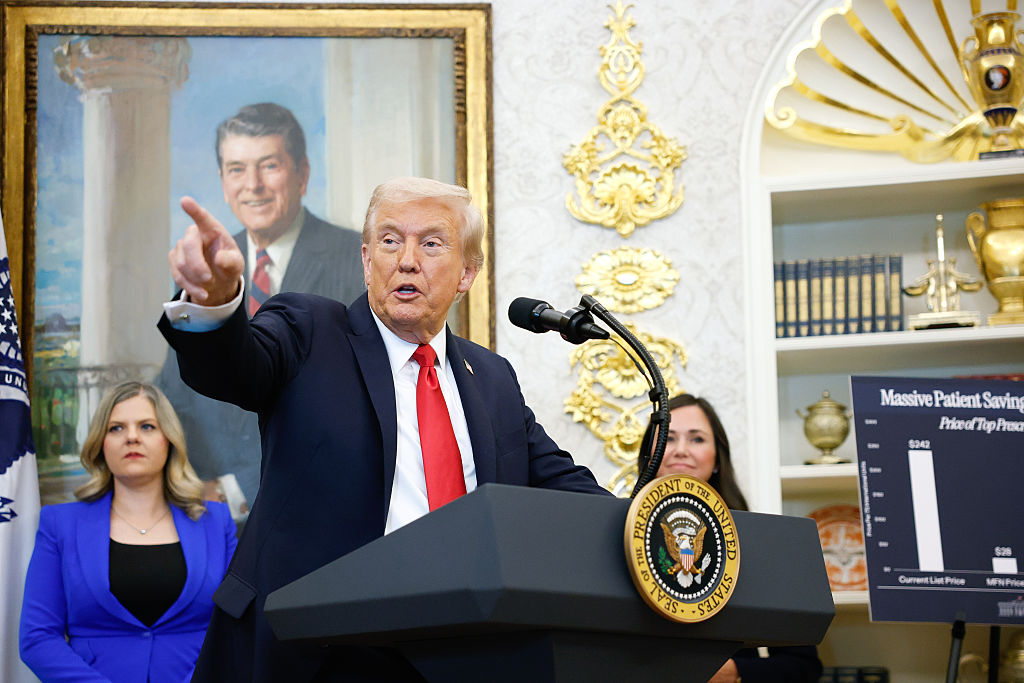
President Donald Trump is pursuing every limit of his executive power during his second term in the White House, abroad and at home, where his efforts have recently expanded to include buying shares in publicly traded companies he deems vital to U.S. national security interests.
Sworn in as 47th president of the United States on January 20, Trump has dealt with multiple real wars, making apparent progress in the ages-old Israel-Palestine-Iran conflict. Russia-Ukraine remains at issue, as does the trajectory of Taiwan-China.
His trade policy and ever-shifting tariffs have also captured the attention of both world business leaders and global markets since this spring, driving a lot of volatility but leaving major equity indexes at or near all-time highs.
From just $107.88 $24.99 for Kiplinger Personal Finance
Become a smarter, better informed investor. Subscribe from just $107.88 $24.99, plus get up to 4 Special Issues

Sign up for Kiplinger’s Free Newsletters
Profit and prosper with the best of expert advice on investing, taxes, retirement, personal finance and more - straight to your e-mail.
Profit and prosper with the best of expert advice - straight to your e-mail.
Now, major players are talking about what's best described as Trump's comprehensive industrial policy. Matthew Housiaux explained Trump's economic intervention in the September issue of The Kiplinger Letter:
A big shift in economic policy is underway. One that includes more federal involvement in parts of the private sector that were once off-limits. The shift began in Donald Trump's first term. Now, the president is attempting to cement it.
This shift reached a short-term climax in early October when Trilogy Metals (TMQ) announced the Department of War (formerly, the Department of Defense) would invest approximately $35.6 million and take a 10% stake in the small-cap Canadian mining stock.
How is Trump impacting stocks?
Historically, U.S. presidents have had little direct impact on the stock market.
While particular policies and major public initiatives have created catalysts for certain sectors and industries in the past, presidents have generally avoided "picking winners" among privately held and publicly traded companies.
As is the case in many ways under Trump, things are different these days. As Housiaux notes, Trump is "making the government a major shareholder of so-called national champion firms … to shore up the manufacturing base."
In August, the Trump administration converted approximately $11 billion in funding and grant commitments made by the Biden administration into a 9.9% equity interest in semiconductor stock Intel (INTC). Previously, in June, it negotiated a "golden share" as part of Nippon Steel's acquisition of U.S. Steel that gives the president effective control of the latter's operations.
The White House suggested it might also buy shares in major defense contractors such as Lockheed Martin (LMT). That hasn't happened yet. But the TMQ deal indicates the president and the White House see a bigger investable universe beyond the manufacturing base.
Major players are following the administration's lead.
The biggest Trump stock
"The U.S. has allowed itself to become too reliant on unreliable sources of critical minerals, products and manufacturing — all of which are essential for our national security," JPMorganChase (JPM) CEO Jamie Dimon wrote in an October 13, 2025, op-ed for The Wall Street Journal (pay wall).
Dimon's bank has planned a 10-year, $1.5 trillion initiative "to facilitate, finance and invest in industries crucial to national security and economic resilience." JPMorgan will make $10 billion in direct investments — "from critical medications and minerals to military equipment and semiconductors" — as part of its plan.
“Many of these companies are long-standing clients of ours where we want to put our muscle behind them," said JPM Asset & Wealth Management CEO Mary Erdoes during management's third-quarter earnings conference call.
An index of Trump stocks
In an October 14 research note, the trading desk team at Morgan Stanley (MS) weighed in with a list of 39 stocks in four basic groups: rare earths; batteries; lithium; and nuclear
Formally, the Morgan Stanley National Security Index (MSXXNSEC) could provide a basis for sponsors to create exchange-traded funds and other investable products around the national security theme.
Informally, here are the components of an index of potential new Trump stocks:
Rare Earths | Row 0 - Cell 1 | Row 0 - Cell 2 |
Stock (ticker) | Market value | 2025 total return |
TMC the metals company (TMC) | $3.53B | 675.9% |
United States Antimony (UAMY) | $1.69B | 609.6% |
MP Materials (MP) | $14.85B | 437.4% |
USA Rare Earth (USAR) | $3.25B | 148.6% |
Idaho Strategic Resouces (IDR) | $664.70M | 332.3% |
NioCorp (NB) | $930.81M | 435.5% |
Energy Fuels (UUUU) | $5.00B | 322.8% |
Critical Metals (CRML) | $2.08B | 186.0% |
Trilogy Metals (TMQ) | $1.17B | 512.1% |
American Resources (AREC) | $399.88B | 320.8% |
Texas Mineral Resources (TMRC) | $114.05M | 507.8% |
Rare Element Resources (REEMF) | $148.13M | 297.6% |
Ero Copper (ERO) | $2.36B | 68.9% |
Perpetua Resources (PPTA) | $3.01B | 162.4% |
Batteries | Row 16 - Cell 1 | Row 16 - Cell 2 |
Stock (ticker) | Market value | 2025 total return |
Tesla (TSLA) | $1.38T | 6.2% |
Eos Energy (EOSE) | $4.02B | 217.9% |
Solaris Energy Infrastructure (SEI) | $2.42B | 90.7% |
Amprius (AMPX) | $1.60B | 356.4% |
Microvast (MVST) | $2.07B | 209.2% |
Ballard Power Systems (BLDP) | $1.10B | 121.1% |
QuantumScape (QS) | $8.75B | 197.9% |
American Battery Technology (ABAT) | $669.33M | 130.5% |
Ivanhoe Electric (IE) | $2.14B | 113.2% |
Lithium | Row 27 - Cell 1 | Row 27 - Cell 2 |
Stock (ticker) | Market value | 2025 total return |
Albemarle (ALB) | $11.21B | 12.6% |
Sigma Lithium (SGML) | $754.70M | -39.6% |
Lithium Americas (LAC) | $1.83B | 148.8% |
Standard Lithium (SLI) | $1.10B | 269.2% |
Nuclear | Row 33 - Cell 1 | Row 33 - Cell 2 |
Stock (ticker) | Market value | 2025 total return |
Oklo (OKLO) | $23.93B | 663.7% |
Lightbridge (LTBR) | $788.08M | 458.4% |
ASP Isotopes (ASPI) | $1.22B | 143.9% |
Centrus Energy (LEU) | $7.56B | 523.7% |
Cameco (CCJ) | $39.68B | 77.3% |
BWX Technologies (BWXT) | $19.10B | 88.8% |
Ur-Energy (URG) | $638.45M | 52.2% |
NANO Nuclear Energy (NNE) | $2.01B | 94.5% |
NuScale (SMR) | $6.38B | 165.7% |
NexGen Energy (NXE) | $5.88B | 36.1% |
Uranium Royalty (URC) | $852.61M | 102.5% |
enCore Energy (EU) | $656.74M | 2.9% |
Mirion Technologies (MIR) | $5.64B | 40.1% |
Data is as of October 16.
Familiar names include Trilogy Metals among the rare earths, battery maker Tesla (TSLA) and Cameco (CCJ), the world's biggest publicly traded uranium producer.
NANO Nuclear Energy (NANO) and Oklo (OKLO) are other good ways to invest in the nuclear revolution, and Albemarle (ALB) is among the best lithium stocks to buy.
Beyond the bigger and familiar names, the Morgan Stanley index includes a multitude of small-cap stocks that are a bit more worthy of speculation based on the expectation that fund managers, then investors, will increase their exposure to a hot theme.
Meanwhile, all things considered, these remain the best stocks to buy for a Trump presidency.
JPMorganChase
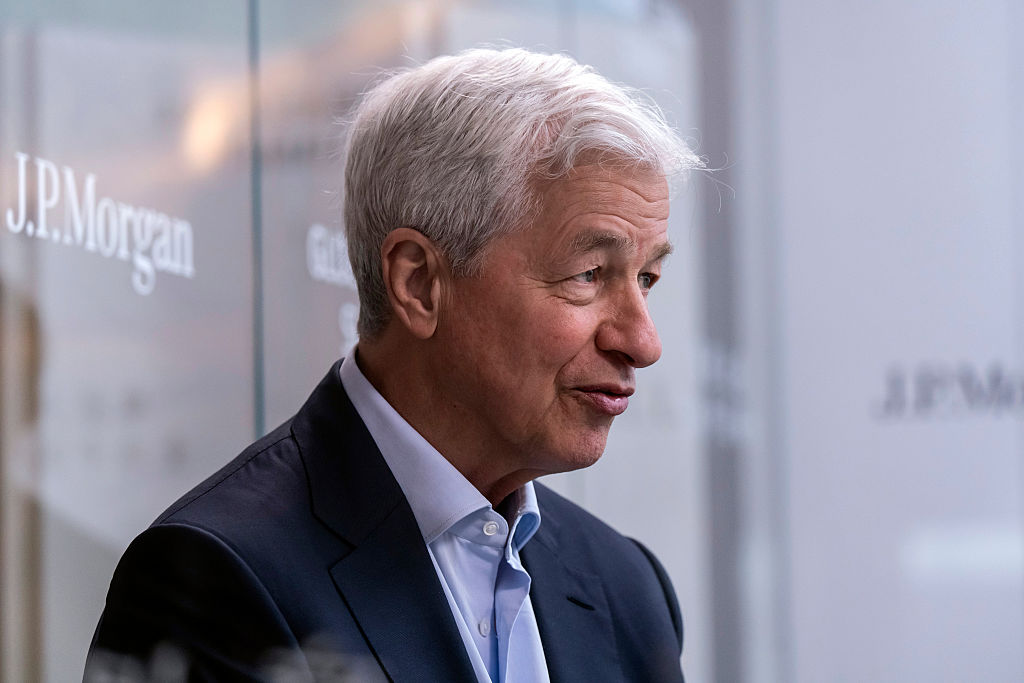
- Market value: $812.7 billion
- Sector: Financial services
- Industry: Banks, diversified
- 2025 total return: 27.2%
JPMorganChase (JPM) CEO Jamie Dimon's October 13 op-ed in The Wall Street Journal is a seminal moment in the second Trump administration — a signal that a president is getting some of his way.
JPMorgan is the largest commercial bank in the U.S. with $3.64 trillion in assets and 4,975 branches. JPM is the largest bank in the world by market cap.
When its chief executive aligns with the commander in chief, it means something. That's especially so given Dimon's previous publicly expressed concerns about the impact of Trump's tariffs and other policies on the global financial system and the domestic economy.
"You haven’t seen an effect yet other than in the sentiment," Dimon said in June, according to CNN. "Maybe in July, August, September, October, you’ll start to see; did it have an effect? My guess is it did, hopefully not dramatic."
It's fair to say Trump has had a dramatic effect, perhaps none more so than Dimon's own October surprise.
Cameco
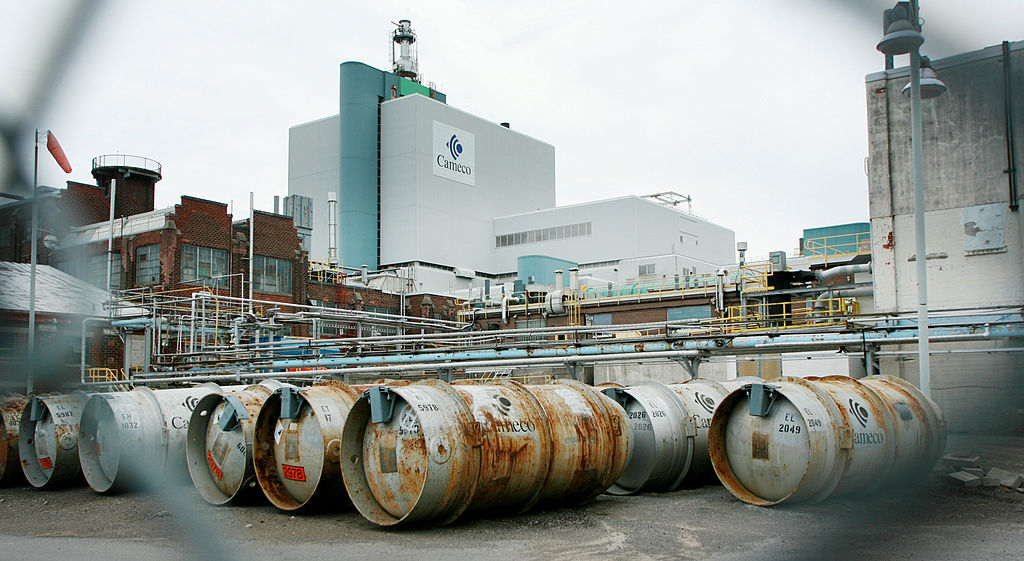
- Market value: $39.7 billion
- Sector: Energy
- Industry: Uranium
- 2025 total return: 77.3%
Cameco (CCJ) got a big boost when Trump signed an executive order to overhaul the Nuclear Regulatory Commission, which regulates America's existing nuclear reactors and the new ones to come.
Under the order, the regulator will be required to decide on applications for the building of new nuclear reactors within 18 months.
Trump would like to see nuclear plants of all sizes built in the next few years, including small modular reactors (SMRs). He would also like to see nuclear reactors constructed on federal lands.
The executive order also aims to accelerate uranium mining in the U.S., where Cameco doesn’t currently operate.
The company has two mines in Canada and another in Kazakhstan, with proven and probable mineral reserves of 371.2 million metric tons. It certainly has the expertise to execute in America, too.
Huntington Ingalls Industries
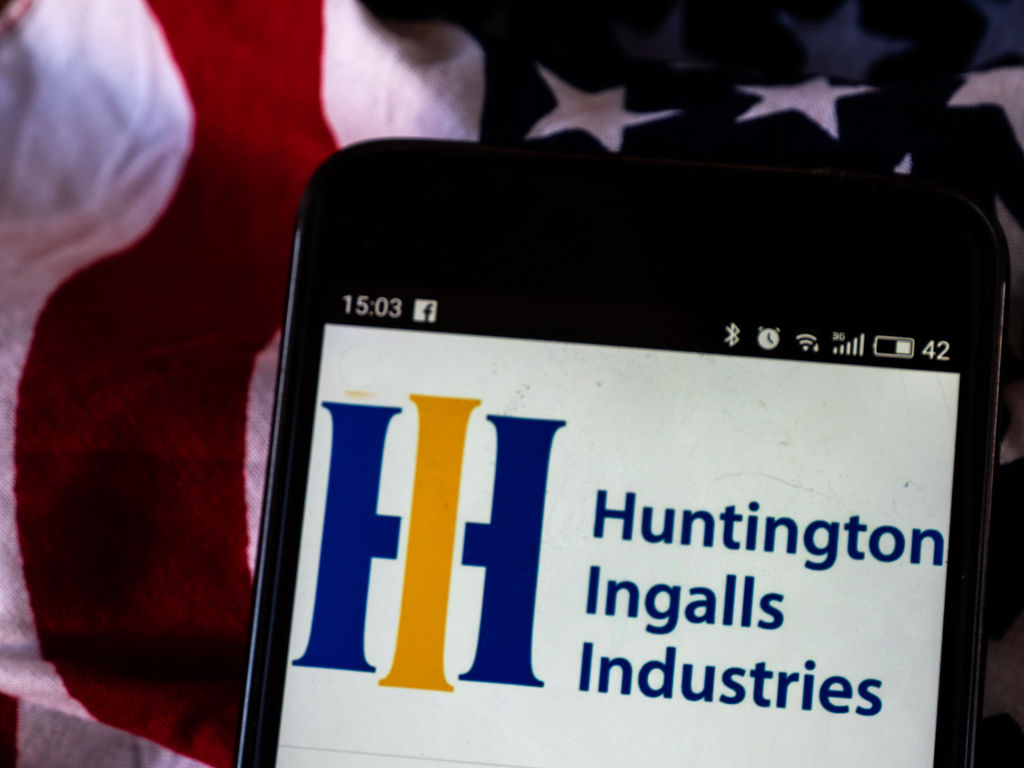
- Market value: $11.1 billion
- Sector: Industrials
- Industry: Aerospace & defense
- 2025 total return: 52.4%
Huntington Ingalls Industries (HII) is the country's largest military shipbuilder, with annual revenue of $11.5 billion in 2024.
It’s also one of America’s oldest public companies, with a history that dates to 1886 and the formation of the Newport News Shipbuilding and Drydock Company.
There was concern the White House would scrutinize the Trump-rechristened Department of War's (DOW) annual budget more closely during a second Trump administration, seeking to identify fraud and waste.
Geopolitical instability in the Middle East, Asia and Ukraine has prompted the president to shore up any potential military weaknesses in the U.S.
Trump's signature One Big Beautiful Bill Act (OBBB) includes several provisions aimed at the American shipbuilding industry, which Trump would like to see catch up to the global dominance of China, South Korea and Japan.
Sterling Infrastructure
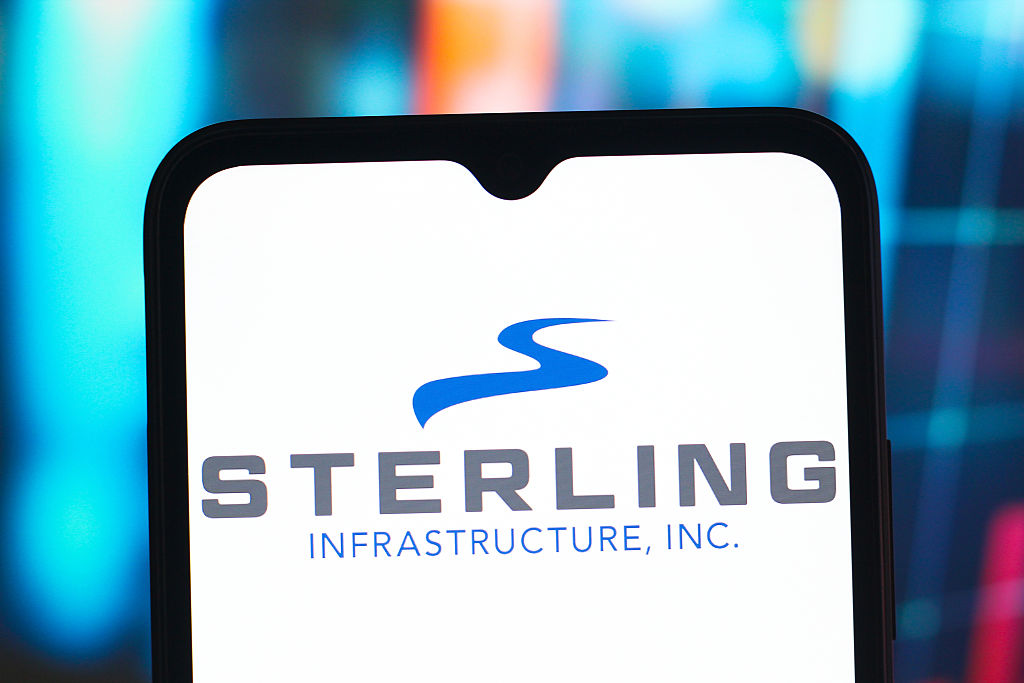
- Market value: $11.0 billion
- Sector: Industrials
- Industry: Engineering & construction
- 2025 total return: 114.3%
Sterling Infrastructure (STRL) is a top 10 holding of the Invesco Building & Construction ETF (PKB). Trump is interested in backing projects of national significance, such as roads, bridges and ports.
Most of these projects involve public rather than private funding. Sterling's Transportation Solutions business, which accounted for 28% of its $430.9 million in first-quarter 2025 revenue, should benefit significantly from this focus.
Sterling's E-Infrastructure Solutions business could benefit even more from the second Trump administration.
It focuses on data center infrastructure, manufacturing onshoring and e-commerce, and the president has issued an executive order directing the government to make federal land available for large-scale data center projects.
Given the E-Infrastructure Solutions segment's high operating margin, Sterling is well-positioned to grow its top and bottom lines.
Coinbase Global
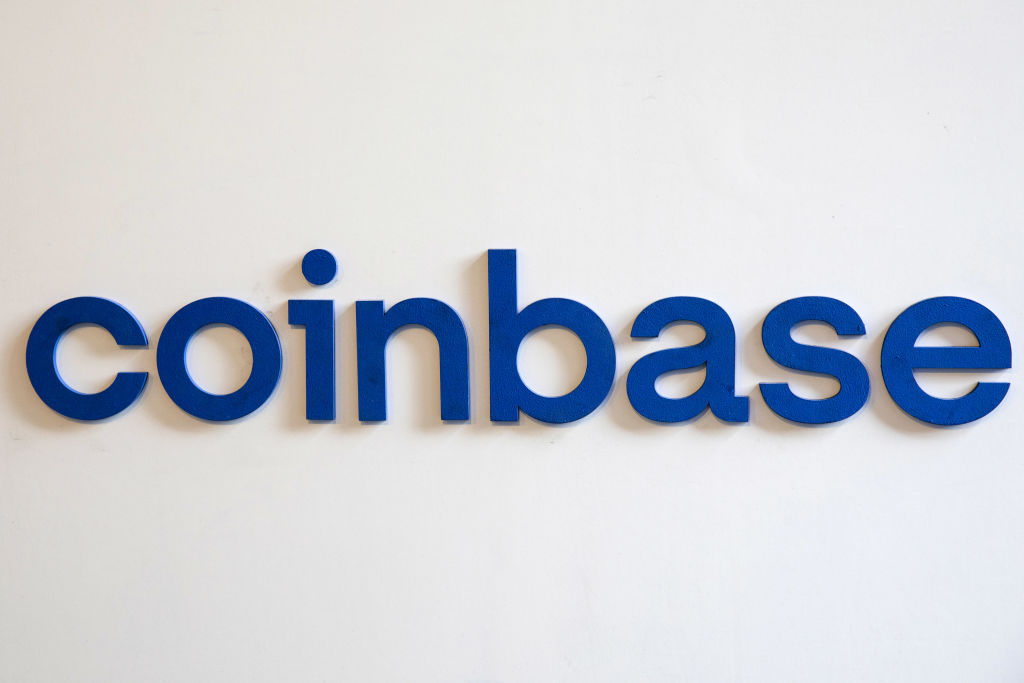
- Market value: $84.9 billion
- Sector: Financial services
- Industry: Financial data & stock exchanges
- 2025 total return: 33.0%
Trump's reversal on cryptocurrency was an early indicator of his potential to impact particular stocks. Witness Coinbase Global (COIN) and its nearly 40% year-to-date gain.
During his first administration, Trump made clear he was not a fan of digital assets.
In August 2024, Trump took to X to announce he'll unveil a "plan to ensure the United States will be the crypto capital of the planet."
By December, bitcoin broke the $100,000 barrier for the first time as the market perceived that a second Trump administration and its initiatives and policies will create tailwinds for cryptocurrency.
When Trump signed the first major federal cryptocurrency legislation in mid-July, bitcoin was trading near $120,000. Price action for bitcoin ETFs reflects this bullishness.
Crypto remains an area of the market that could get further lift from Trump's time in the White House. COIN is still one of the best single stocks to ride this particular presidential cycle.
Related content
Profit and prosper with the best of Kiplinger's advice on investing, taxes, retirement, personal finance and much more. Delivered daily. Enter your email in the box and click Sign Me Up.

Will has written professionally for investment and finance publications in both the U.S. and Canada since 2004. A native of Toronto, Canada, his sole objective is to help people become better and more informed investors. Fascinated by how companies make money, he's a keen student of business history. Married and now living in Halifax, Nova Scotia, he's also got an interest in equity and debt crowdfunding.
- David DittmanInvesting Editor
-
 Changes Are Coming for This Invesco Bond Fund
Changes Are Coming for This Invesco Bond FundThe Invesco BulletShares 2026 Corporate Bond ETF's bonds will mature in 2026. Here's what investors should do.
-
 What Science Reveals About Money and a Happy Retirement
What Science Reveals About Money and a Happy RetirementWhether you’re still planning or already retired, these research-based insights point the way to your best post-work life.
-
 7 Retirement Planning Trends: What They Mean for You in 2026
7 Retirement Planning Trends: What They Mean for You in 2026From government shutdowns to market swings, the past 12 months have been nothing if not eventful. The key trends can help you improve your own financial plan.
-
 Changes Are Coming for This Invesco Bond Fund
Changes Are Coming for This Invesco Bond FundThe Invesco BulletShares 2026 Corporate Bond ETF's bonds will mature in 2026. Here's what investors should do.
-
 7 Retirement Planning Trends in 2025: What They Mean for Your Wealth in 2026
7 Retirement Planning Trends in 2025: What They Mean for Your Wealth in 2026From government shutdowns to market swings, the past 12 months have been nothing if not eventful. The key trends can help you improve your own financial plan.
-
 What Defines Wealth: Soul or Silver? Good King Wenceslas' Enduring Legacy in the Snow
What Defines Wealth: Soul or Silver? Good King Wenceslas' Enduring Legacy in the SnowThe tale of Good King Wenceslas shows that true wealth is built through generosity, relationships and the courage to act kindly no matter what.
-
 An Investing Pro's 5 Moves to Help Ensure 2025's Banner Year in the Markets Continues to Work Hard for You in 2026
An Investing Pro's 5 Moves to Help Ensure 2025's Banner Year in the Markets Continues to Work Hard for You in 2026After a strong 2025 in the stock market, be strategic by rebalancing, re-investing with a clear purpose and keeping a disciplined focus on your long-term goals.
-
 The Santa Claus Rally Officially Begins: Stock Market Today
The Santa Claus Rally Officially Begins: Stock Market TodayThe Santa Claus Rally is officially on as of Wednesday's closing bell, and initial returns are positive.
-
 Introducing Your CD's Edgier Cousin: The Market-Linked CD
Introducing Your CD's Edgier Cousin: The Market-Linked CDTraditional CDs are a safe option for savers, but they don't always beat inflation. Should you try their counterparts, market-linked CDs, for better returns?
-
 'Humbug!' Say Consumers, Despite Hot GDP: Stock Market Today
'Humbug!' Say Consumers, Despite Hot GDP: Stock Market Today"The stock market is not the economy," they say, but both things are up. Yet one survey says people are still feeling down in the middle of this complex season.
-
 The SEC Is Concerned for Older Investors and Retirement Savers. Here's What You Should Know.
The SEC Is Concerned for Older Investors and Retirement Savers. Here's What You Should Know.The SEC focusing on older investors, retirement and college savers, and private securities. Here's how those changes impact you.